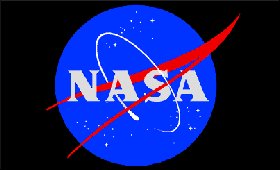|
|
|

|
NASA to study previously unopened Apollo sample
|
|

|
|
| Top Stories |
 |
|
|
|
IANS | 07 Nov, 2019
As NASA plans to return humans to the Moon in 2024, scientists opened an
untouched rock and soil sample from the Moon returned to Earth as part
of the the US space agency's final mission of the Apollo programme.
The
sample, opened on Tuesday, was collected on the Moon by Apollo 17
astronauts Gene Cernan and Jack Schmitt, who drove a 4-cm-wide tube into
the surface of the Moon to collect it and another sample scheduled to
be opened in January 2020, NASA said in statement on Wednesday.
This
marks the first time in more than 40 years that a pristine sample of
rock and regolith from the Apollo era has been opened.
The
sample was opened as part of NASA's Apollo Next-Generation Sample
Analysis (ANGSA) initiative, which is leveraging advanced technologies
to study Apollo samples using new tools that were not available when the
samples were originally returned to Earth.
"We are able to make
measurements today that were just not possible during the years of the
Apollo programme," said Sarah Noble, ANGSA programme scientist at NASA
headquarters in Washington.
"The analysis of these samples will
maximise the science return from Apollo, as well as enable a new
generation of scientists and curators to refine their techniques and
help prepare future explorers for lunar missions anticipated in the
2020s and beyond."
Advances in techniques such as non-destructive
3D imaging, mass spectrometry and ultra-high resolution microtomy will
allow for a coordinated study of the unopened samples at an
unprecedented scale.
Under its Artemis programme, NASA will send a
suite of new science instruments and technology demonstrations to study
the Moon ahead of landing astronauts on the lunar surface by 2024, and
establishing a sustained presence by 2028.
The agency will build
on its past to leverage its Artemis experience to prepare for the next
giant leap - sending astronauts to Mars.
|
|
|
| |
|
|
|
|
|
|
|
|
|
|
|
|
|
|
| |
| Customs Exchange Rates |
| Currency |
Import |
Export |
US Dollar
|
₹91.25
|
₹89.55 |
UK Pound
|
₹122.85
|
₹118.85 |
Euro
|
₹107.95
|
₹104.3 |
| Japanese
Yen |
₹59 |
₹57.1 |
| As on 29 Dec, 2025 |
|
|
| Daily Poll |
 |
 |
| What is your biggest hurdle to scaling right now? |
|
|
|
|
|
| Commented Stories |
 |
|
|
|
|
|
| |
|